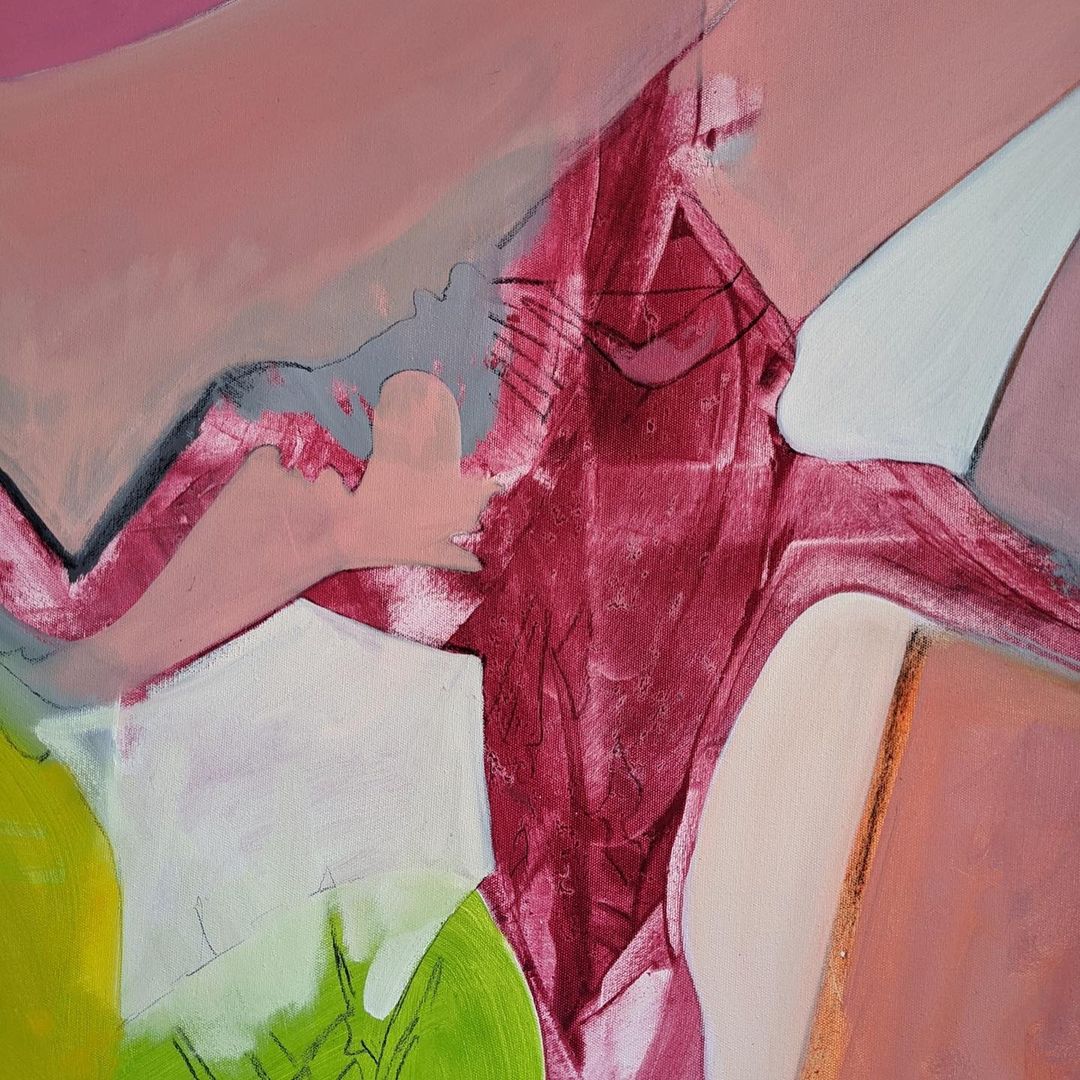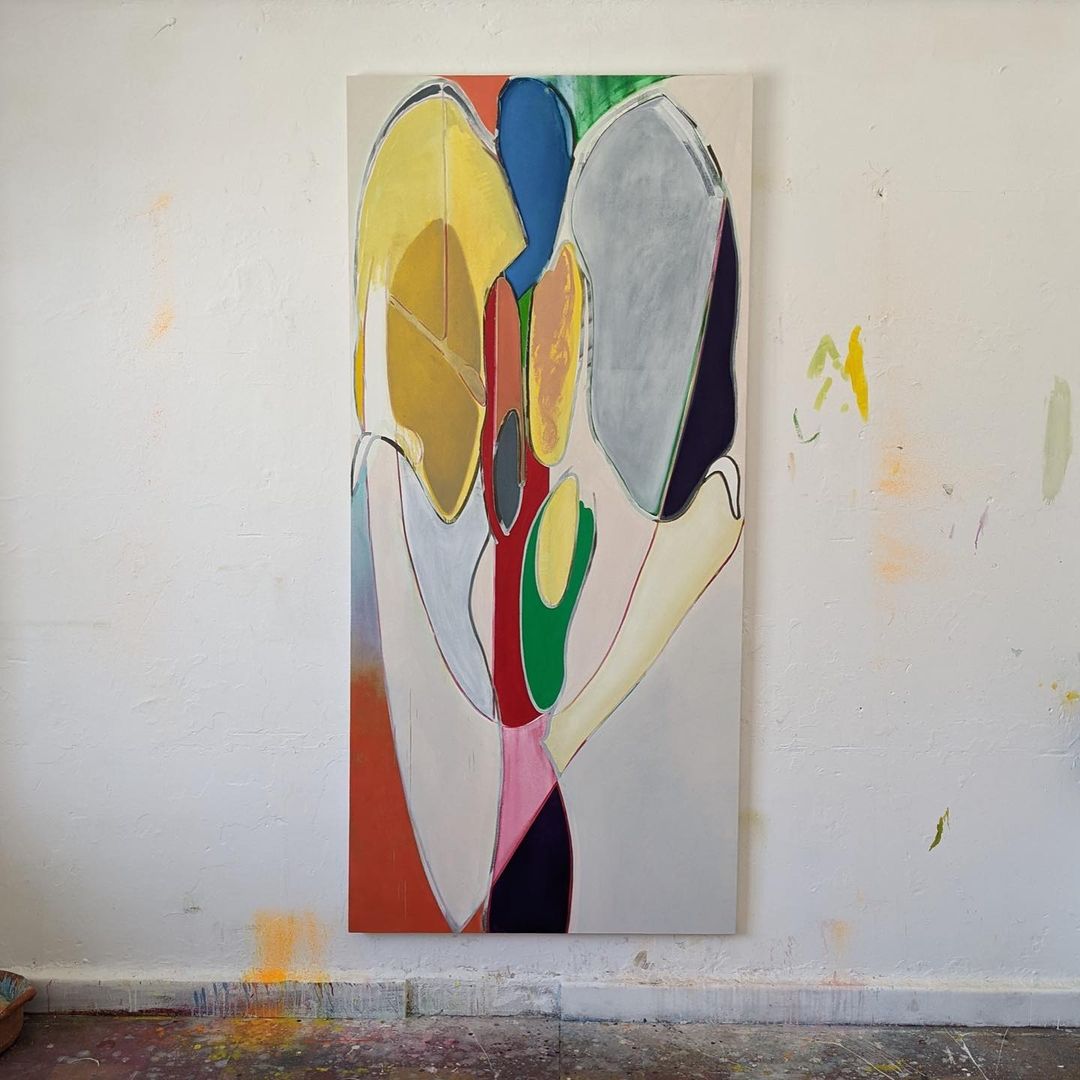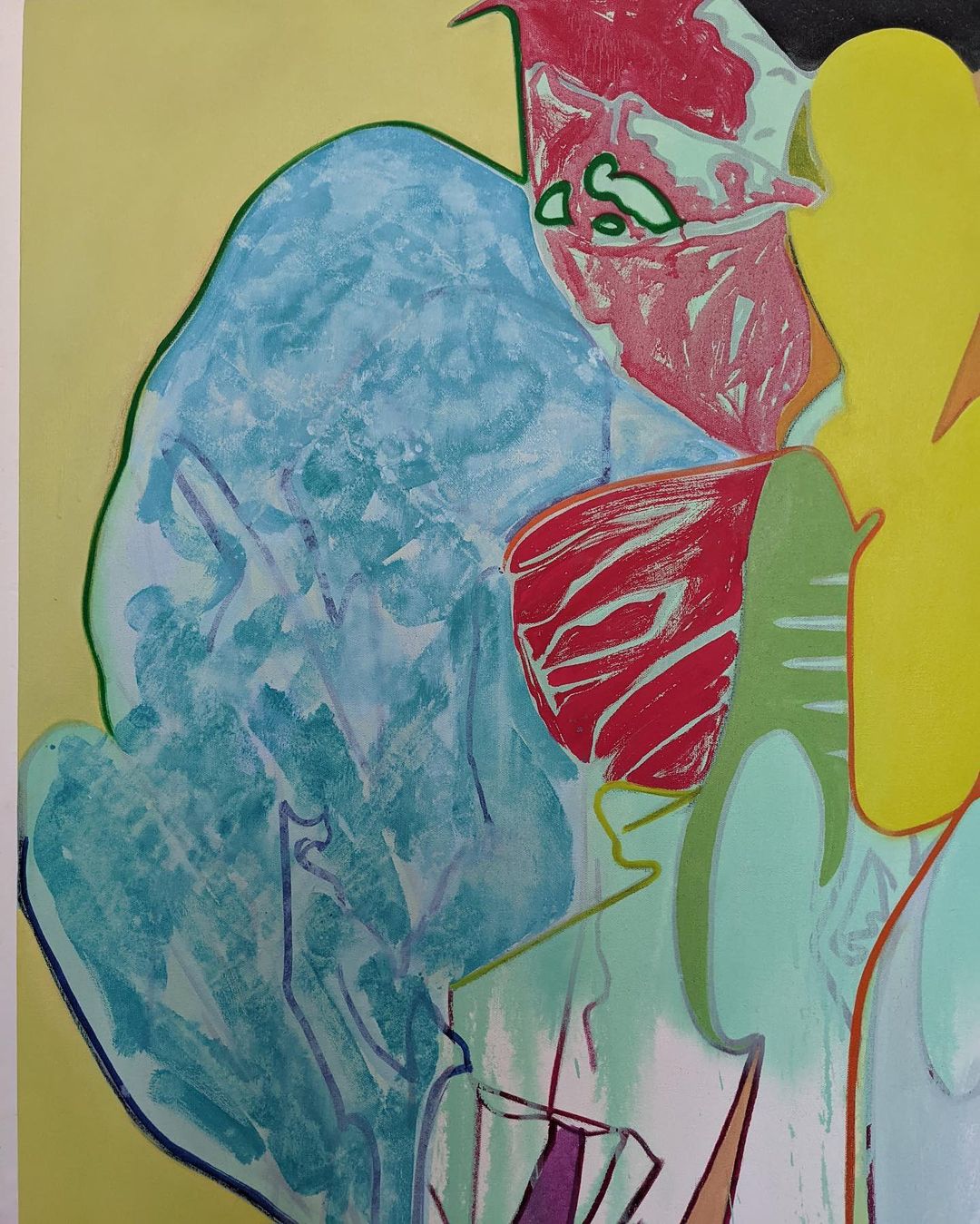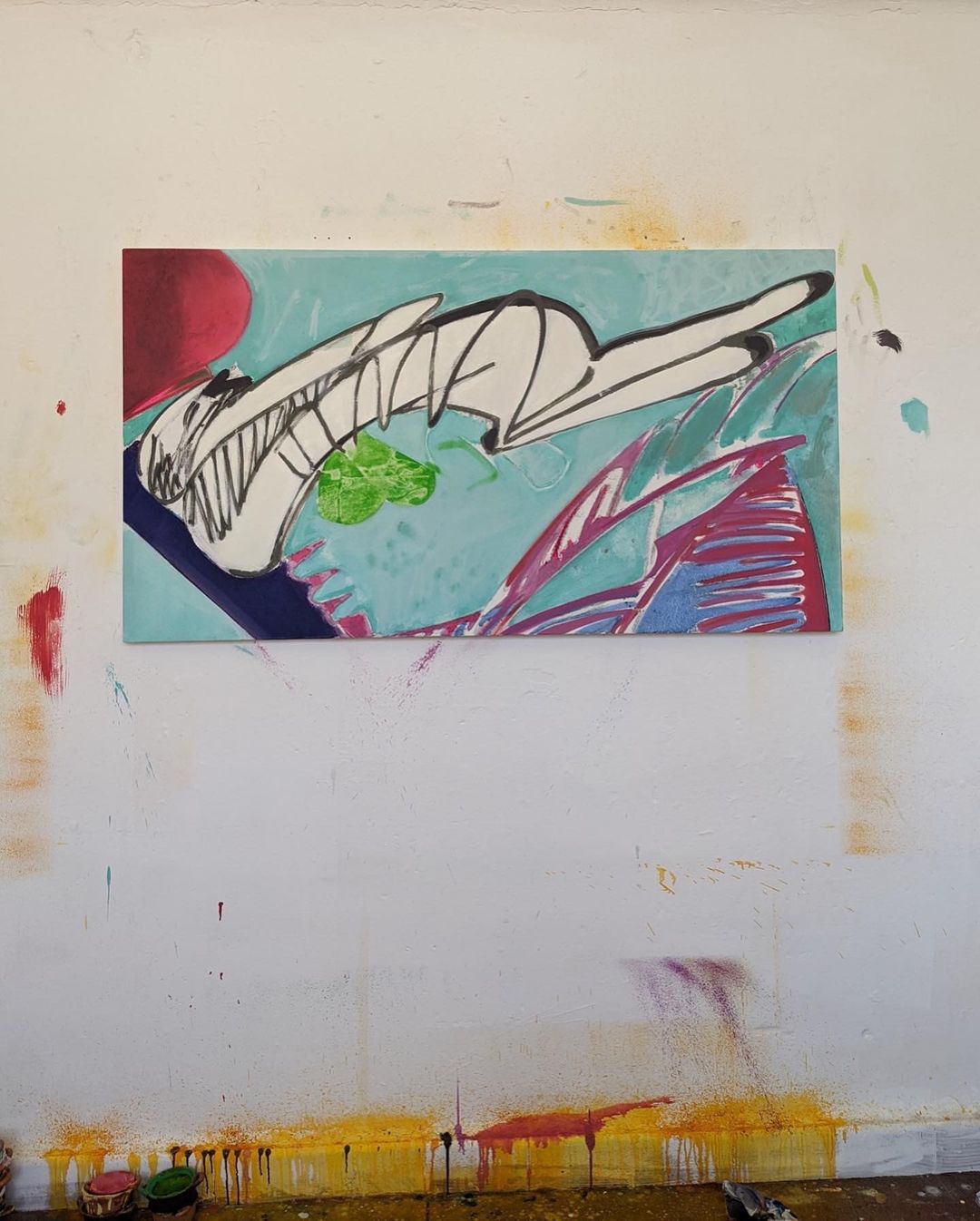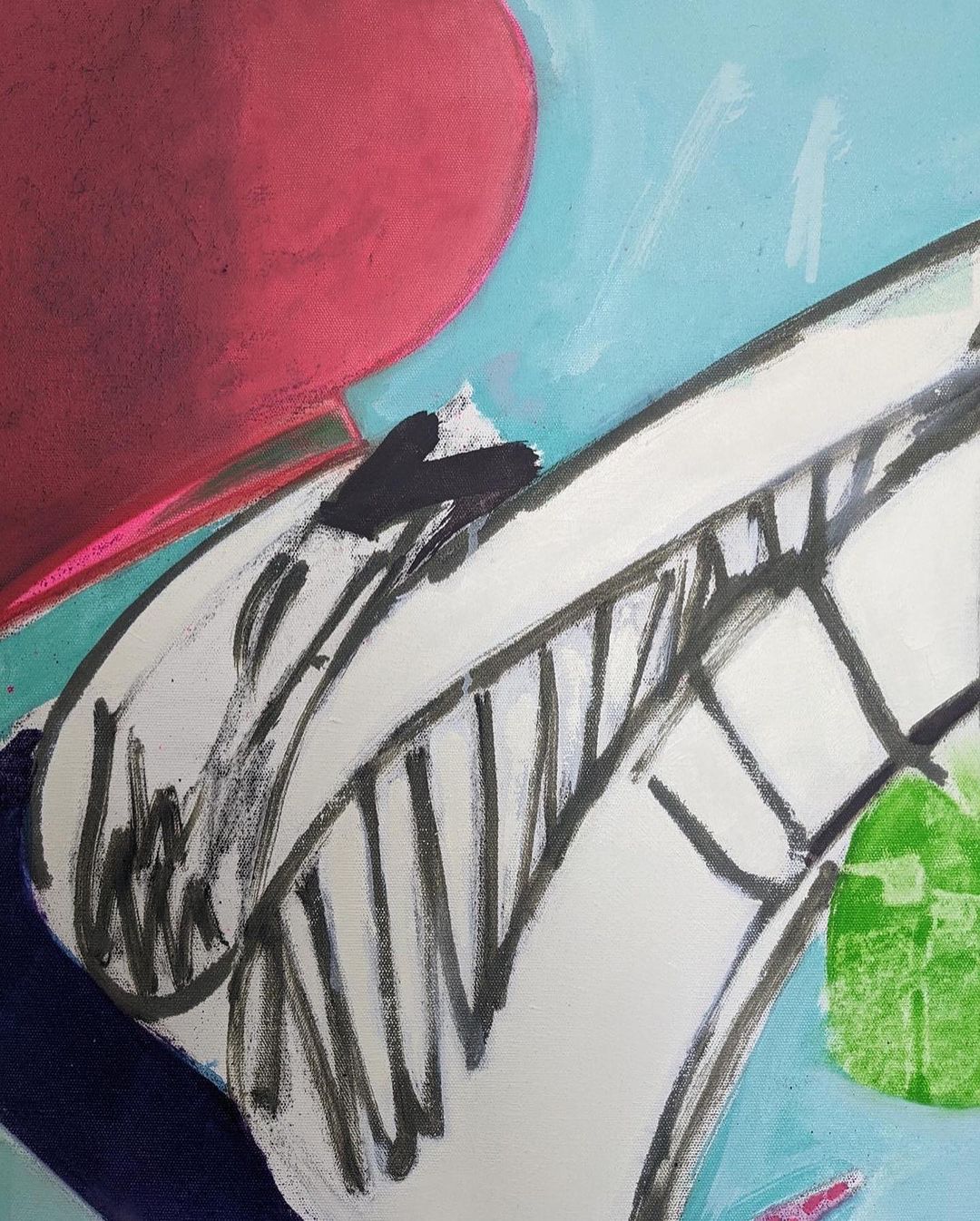Residency: June – August 2022
Mentor: Daniella Géo
Alonso Leon Velarde was born in Lima, Peru, and currently lives and works between Lima and Mexico City. He received a BFA from the Art Institute of Chicago and Goldsmiths University (2016).
Leon Velarde has been included in exhibitions at El Instante Fundación, Madrid; Whitechapel gallery, London; The Parasol Unit Foundation for Contemporary Art London, UK; and Ginsberg Galería, Lima.
For his residency at tropical papers, Alonso Leon-Velarde continued to develop a group of new paintings, painted between Lima and Mexico City and still in progress.
This residency program was in partnership with @artus_conexionglobal and receives dedicated support from Catherine Petitgas @cpetitgas
POSTED: @tropicalpapers_08.09.2022 to 23.09.2022
“I began working on this painting thinking about angels. In the works, I take apart icons present in the universes of faith, and amalgamate form to produce a pictorial density, within which to enact a mirage. I was struck by the 1979 Hungarian animation ‘Bubble Bath’, directed by György Kovásznai. I’m interested in the space that moving images generate, how the light coming from within the screen can be translated onto the canvas. A multiplicity of planes collapse into a picture. Compressed, a fractured form crystallises from a gesture. With a quasi-anamorphic quality, archangels and cacti filter into the paintings, evidencing the syncretic aspects of spirituality and belief.”
“Paint is applied with different densities, sometimes creating pools of color. I look at this application, these marks and color as gestures making a character. Brush stroke as inscription, as pictorial symbol. Line. Negative space. Landscape planes horizontal and vertical. Icons, spirit.”
I started working on a group of new paintings in 2020, after returning to live in Lima. Now situated in a desert and considering its landscape, I began to think of the paintings in terms of mirages. Examining the history of the desert cultures in Peru, from Nazca and Paracas in conjunction with elements of faith, sci-fi and apparitions, I am observant of illusions and distortions of reality, and how these can be mechanized as tools of repression or insights guiding us forward. This contradiction creates a mirage. Traces of orthodoxy embedded in our landscape, orient our thinking to a place where magical and spiritual belief is sometimes grounded in faith. The action happens in the periphery of the form, sometimes converging into saturation and density of color, line and gesture. I’m interested in the tension between the outline and the color, and how it relates to the negative space in the picture. The decisions have to do with rhythm and feltness, rather than color theory. The works shared here, were made in 2022 between Lima and Mexico City and are still in progress, developed during the time of the residency at Tropical Papers.
Paint is applied in different densities, sometimes creating pools of color. I look at this application, these marks and color as gestures making a character. Brush stroke as inscription, as pictorial symbol. Line. Negative space. Landscape planes horizontal and vertical. Icons,
spirit.
As a painting in process, there is more evidence of the paint and the marks enacting themselves as gesture. The color is looking to open space and create presence. The eye is drawn to a form in perpetual flux, sifting through a matrix of lines and color. The phenomenal aspect of a mirage, which distorts our perception of reality, is an important allusion when examining how images are used in the construction of (common) sense. These themes and
ideas surface in the work through the use of a Latin vernacular, working towards a show with the title “Late Bloomer”. Cacti in Bloom, flora and transformation; whilst thinking about the landscapes between Lima and Mexico, Mesoamerican glyphs and shallow space.
Frequencies, rhythm and antennas. I was thinking about dream states and Kandinsky. A form both in stasis/suspended/falling appears as a fantasy; a vision. Alluding to Geo-glyphs and pictorial symbols, the brush strokes and marks look to ground the viewer in an illusion. The drawing suggests an inscription.

